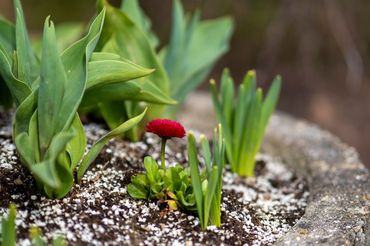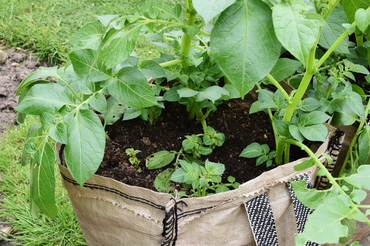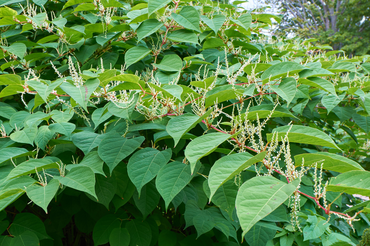
Want to boost your creativity and feel good too? Research shows that simply being around plants can improve your creativity by over 40%. With working from home here to stay, we’ve come up with our five top plants to enhance your home office.
1. For Busy People: Sansevieria
Sansevieria (snake plant or mother-in-law’s tongue) is good-looking and low-maintenance, ideal for busy people. The tall, vertical leaves look great in any office environment.
- Light: Best in bright, indirect light but copes with low light.
- Water: Allow the compost to dry out between waterings.
- Food: Feed once a month in spring and summer with a liquid houseplant fertilizer at half-strength.
2. For Flowers: Streptocarpus
If you like having flowers around, Streptocarpus (Cape primrose) is the plant for you, producing beautiful blooms on long stems in summer and autumn. For the best results, stand the pot on a drip-tray filled with gravel to raise the humidity level around the plant.
- Light: Best in bright, indirect light.
- Water: Water when the compost surface feels dry.
- Food: Feed monthly in summer with specialized Streptocarpus food, or use tomato food at half-strength.
3. For Clean Air: Peace Lily
The peace lily (Spathiphyllum) doesn’t just look good – it also helps to purify the air, getting rid of toxic gases like benzene and formaldehyde. Wipe the leaves occasionally with a damp cloth to remove dust. NB: Peace lilies are toxic to both cats and dogs, so place plants out of pets’ reach.
- Light: Best in partial shade.
- Water: Water when the compost surface feels dry.
- Food: Feed once a month with a liquid houseplant feed.
4. For Offices on a Budget: Spider Plant
One of the best things about spider plants (Chlorophytum comosum) is how easy it is to make more plants from its runners – these are long stems with small clusters of leaves at the end. Fill small pots with multipurpose compost and peg a leaf cluster down in each pot. Water the pots but keep the plantlets attached to the mother plant for a few weeks until they have developed roots, then cut them off and grow them on as individual plants.
- Light: Happy in bright, indirect light.
- Water: Water regularly, keeping the compost moist but not soggy.
- Feed: Feed two or three times between spring and autumn with a liquid houseplant fertilizer.
5. For Dramatic Looks: ZZ Plant
With its glossy fern-like foliage, the ZZ plant (Zamioculcas zamifolia) makes a stylish backdrop for your next Zoom call. For maximum impact, look for Zamioculcas ‘Raven’, with its spectacular purple-black leaves.
- Light: Best in bright but indirect light.
- Water: In summer, water when the compost surface feels dry. Water very sparingly in winter.
- Food: Feed monthly from spring to autumn with a balanced liquid houseplant fertilizer.
It’s amazing how plants can make any space look and feel better. Turn your home office green today with a few indoor plants from our sensational range in the centre.




